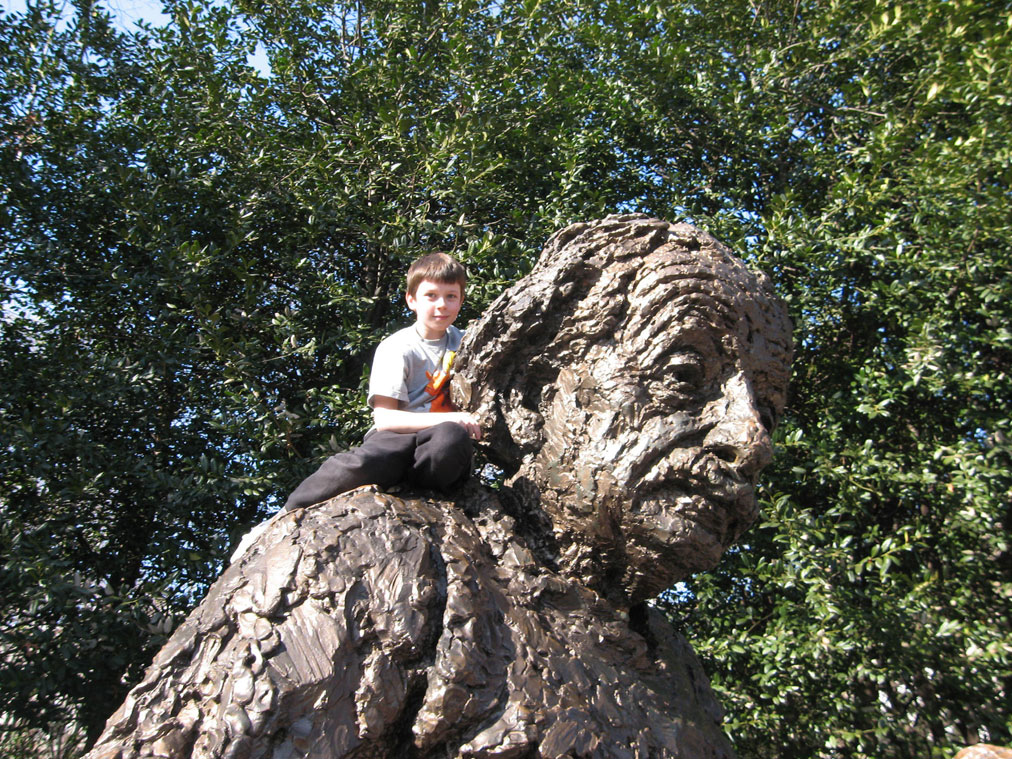Extra Credit Timeline of People and Discoveries
Extra Credit Assignment (up to a possible +4 added onto your lowest
test or your second lowest problem set (the lowest ps is dropped)):
If I have seen further it is only by standing on ye shoulders of
giants.
[Isaac Newton in a Letter to Robert Hooke, dated
5 February 1675]

Einstein and Leisureguy's (Michael Han) grandson. Posted
March 23, 2007.
http://leisureguy.wordpress.com/2007/03/23/on-the-shoulders-of-giants/
You may work alone or in a group of up to 3 people.
Choose one of the following topics:
History of Vectors
History of Linear Spaces
History of Determinants
History of Methods of Solving Linear Equations (False position, Gaussian,
Gauss-Jordan, Cramer's Rule, LU and QR decompositions, computer algorithms...)
History of the Algebra of Matrices (multiplication, inverses, addition,
Strassen algorithm...)
Create an attractive and professional historical timeline
that explores the interesting and important
breakthroughs and controversies - not the entire history.
Be sure that the timeline is in your own words and includes
important contributions from diverse scientists or mathematicians as
well as interesting pictures.
Approximate dates can be noted as ~1762 or by a range of dates, such
as 1700-1800. A maximum of three-pages will be allowed.
The result
should be an in depth exploration of the history of the specific topic - not
the history of all of linear algebra.
Here is a sample timeline from another
class, which incorporates pictures
of the related discoveries and mathematicians.
Annotated Bibliography
Use many different types of sources, including scholarly references
and library sources.
Submit a separate annotated bibliography of all
of the sources you used in the timeline, with annotations explaining
how you used each reference in your timeline, where the pictures came from,
etc. Use as many pages as you need for the annotated bibliography.
References and Suggestions
Library databases such as Jstor, library
books or books in Dr. Sarah's office contain
a wealth of historical information.
Websites such as the
MacTutor History of
Mathematics archive (O'Connor and Robertson, 2005)
provide an
extensive collection of articles on particular people and topics.
The
Earliest Known Uses of
Some of the Words of Mathematics (Miller, J, 2008)
can provide history on the development as well as the first published
appearance of terms. Wikipedia's history pages can also be useful.
